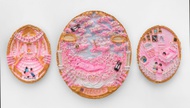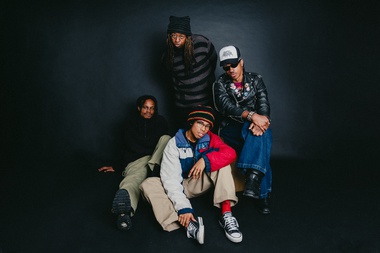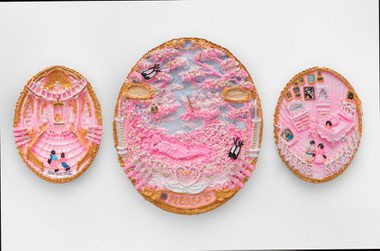Galleries specializing in the art form somewhat vaguely labeled “street art”—think of it as a hybrid of graffiti and Andy Warhol—are common in the U.K. and Europe, where graffiti tagging is more popular than it is here. A few exist in New York, but otherwise there’s not a whole lot of focus here in the States. Except at John Martone’s online gallery, vegasstreetart.com, which he operates out of his home in, of all places, Henderson. “[There’s] really nobody in the U.S. who’s committed to the street like I am.”
It’s safe to say there’s not a lot of street art on the streets of Henderson. The art form derives from graffiti, but it goes beyond graffiti in that its founding artists made prints, stencils and other reproductions of their street art. A later generation of artists was inspired by these taggers and the images they created and reproduced, even though they themselves did not grow up tagging. So what does it all have in common? According to Martone, “It all has an underlying sexual, military, fuck-you tone. I don’t know how else to say it. Really most of it does.”
More
- Beyond the Weekly
- Vegasstreetart.com
- Banksy
- Bäst
Martone’s gallery features, among many others, the British artist Banksy—the superstar of the street-art world, whose pieces might go for as high as $500,000 to $2 million. Banksy’s work is often sharply political, as in “Napalm,” a 2004 screen print that features Ronald McDonald and Mickey Mouse holding hands with the famous image of Kim Phúc, the naked girl running from the napalm strike in Vietnam.
Martone also carries Brooklyn-based artist Bäst, whom Martone likens to Salvador Dali. Bäst’s surreal wheat-pasted collages mix body parts and corporate logos into an often sexually provocative stew.
Obviously, one cannot talk about street art, an aesthetic that seems at its roots opposed to mainstream success, without asking the question of whether a piece of street art that sells for hundreds of thousands of dollars means the artist has sold out. While Banksy gives away a lot of the money he makes, Martone says, “How true can you stay? The almighty dollar gets you, eventually.”
Martone, a former real-estate investor, moved from Los Angeles in 1988, and has been brokering art here since. For years, he focused on contemporary art, but gradually was drawn to the street-art pieces he occasionally came into contact with. “I discovered it’s a whole other world. People don’t realize it’s out there. They don’t realize how big a deal it is in Europe.” A year ago he launched his gallery online. He plans a “full-blown” brick-and-mortar space when the economy improves. “This would be a great representation for the United States and mainly the West Coast.”
While most of his clients still hail from London and New York, a few dozen locals have also begun buying from him. Still, “People don’t really know that I’m here,” he says. Of course, there’s plenty of street cred in anonymity.








Previous Discussion: